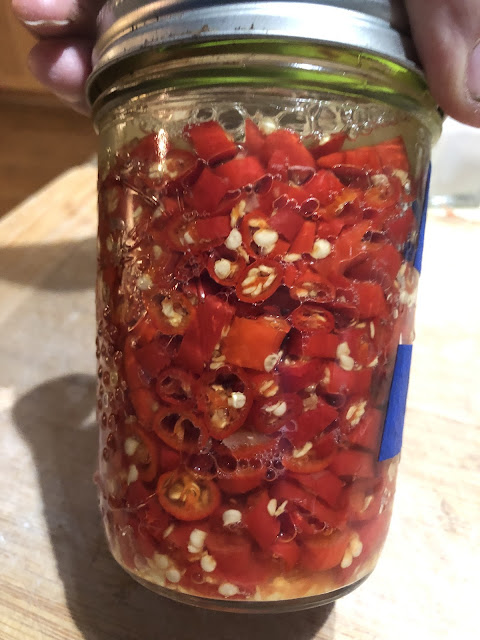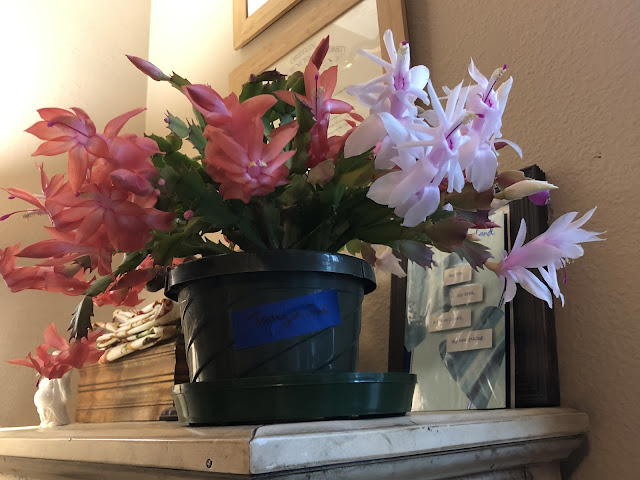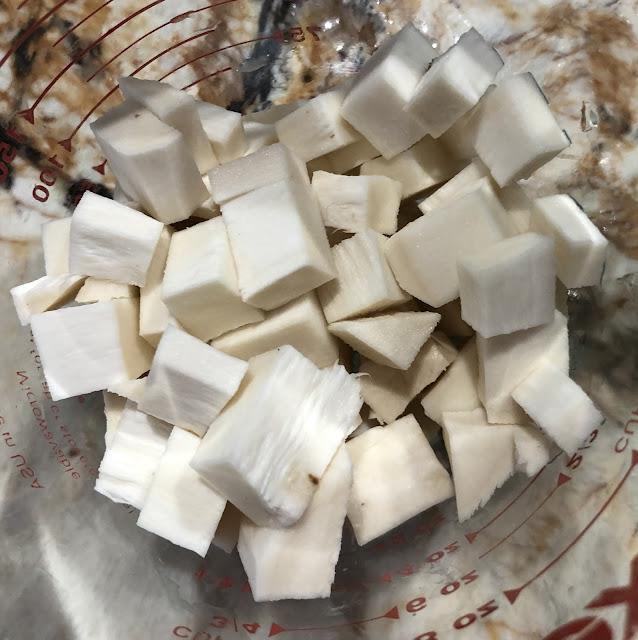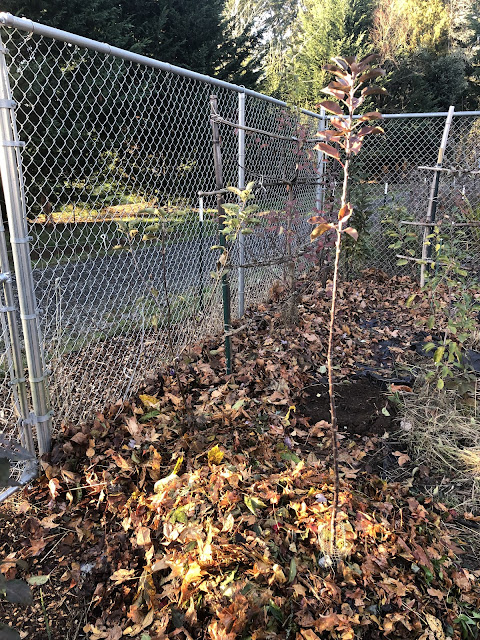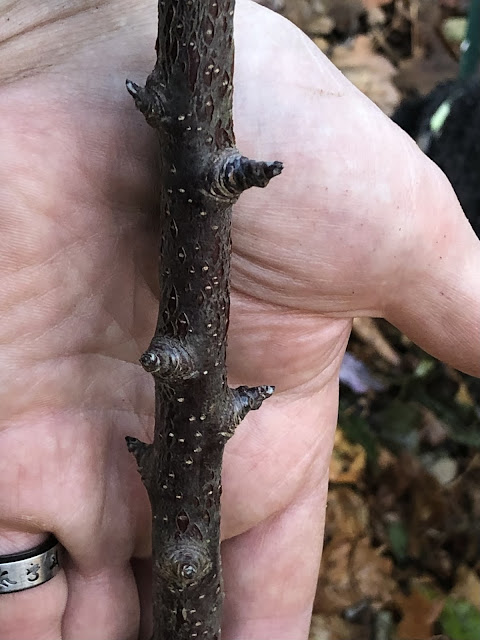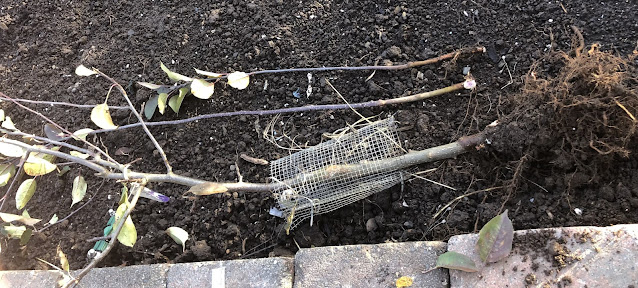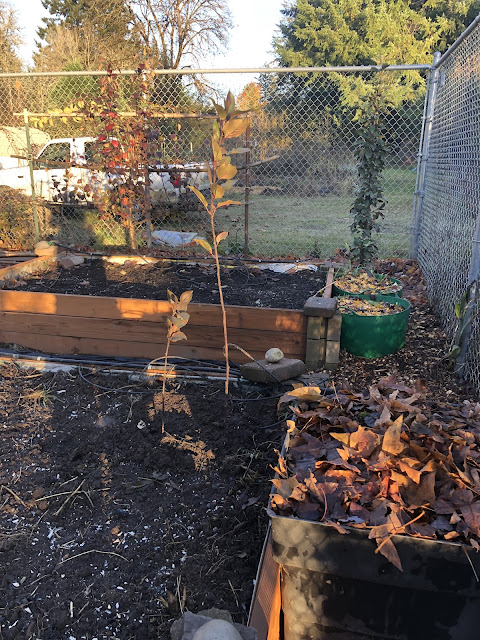In Spring, 2020, I manually pollinated some Redlove Calypso flowers with pollen from columnar Golden Sentinel. Some fruits resulted. Then I saved the seeds, stratified, and planted. Three seedlings did well. One had darker red leaves, one was more greenish red, one was green with red petioles.
That fall (2021), I planted the two red leaf saplings in the mini orchard. This is the taller of those now.
The tall one is that sapling. It's about 7 feet tall now. The shorter one was a little less vigorous, and something chewed the tip, but it's still OK at about 4 or 5 feet tall now.
I don't know if this will bloom next Spring, The side nubs look a bit like flower spurs but the buds don't look that much like flower buds, so far.
There is also one longer spur.
A few years ago, I read that the first blooms can come when an apple sapling has about 90 leaf nodes, and the first fruits at about 120 nodes. This tree is at about that 120 node stage now. It would be fun if it produces. I can't say for certain, but it seems to be in a columnar shape. Its sibling also produced only a vertical shoot, instead of multiple spreading branches, when topped. It's still only a guess how these will turn out.
The third sapling is in a differed area and I don't know yet if it survived.
Here are the original seedling of this cross.
Edit. Wow, I can't believe I found the reference. Here. I think their data is based on saplings in containers, which might affect the blooming. Trees seem to bloom at smaller size, in containers. And here. Transition from juvenile to adult vegetative phase is at about 77 internodes, and transition from adult vegetative to adult reproductive phase is at about 122 internodes. Slightly different from what I remembered, but not too far off. Re-reading that web page, maybe I can use the Bud-9 rootstocks, obtained by pulling off offshoots, as rootstock and graft the tips onto them. Just thinking. Bud-9 is known to be precocious.










